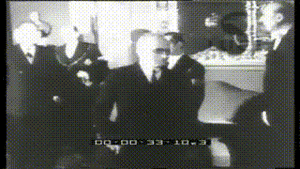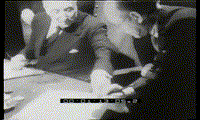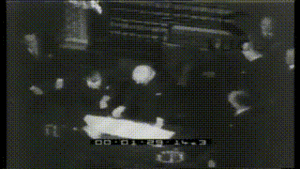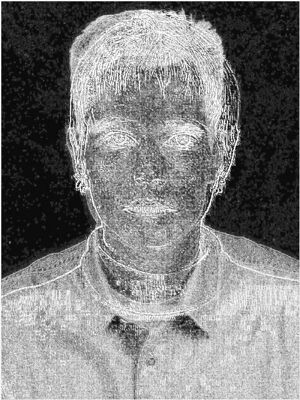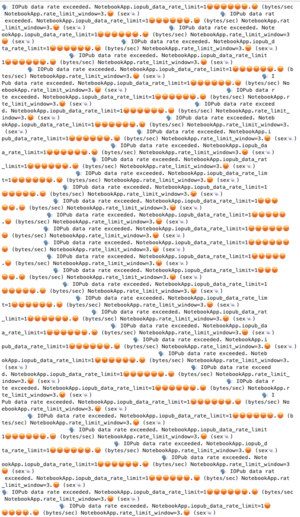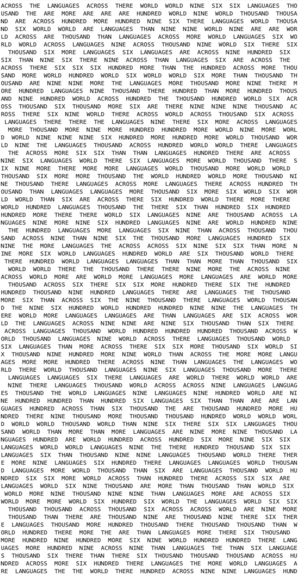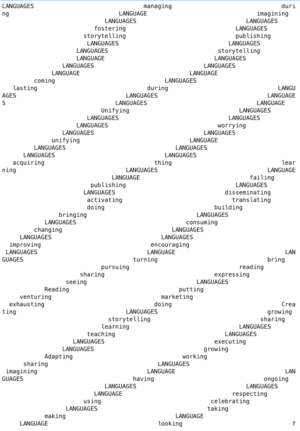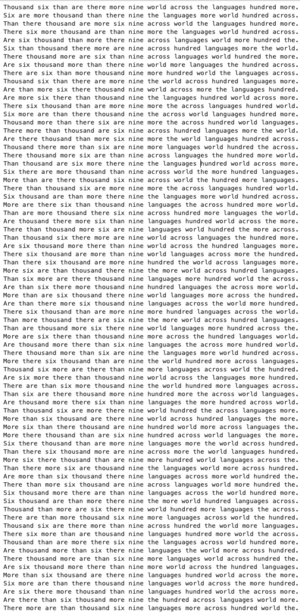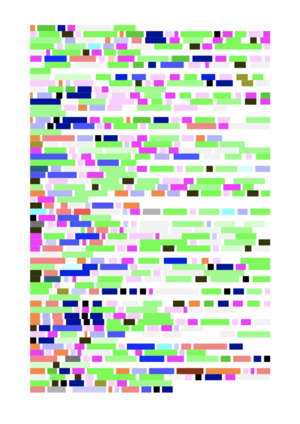User:Federico/PrototypingPatches1
First Trimester's Prototyping Patches from Federico
Speculative Constitution
FUN FACT: This will be exposed here with a series of three gifs
Since I do not like the first article of italian constitution that says
"Italy is a Democratic Republic, founded on work"[1]
I wanted to detourn the firsts 12 articles of the constitution, taking contents from Utopia by Thomas Moore and The Anarchist Cookbook.
Here the Speculative Constitution!
import random #otherwise random does not work :)
#first parts of the first 12 articles of the italian constitutes
it_articles = ["\n\nART.1 \nItaly is a Democratic Republic, founded", 'ART.2 \nThe Republic recognises and guarantees', 'ART.3 \nAll citizens have equal social dignity and are','ART.4 \nThe Republic recognises the right of all citizens to','ART.5 \nThe Republic, one and indivisible, recognises and promotes','ART.6 \nThe Republic shall protect','ART.7 \nThe State and the Catholic Church are','ART.8 \nAll religious confessions enjoy','ART.9 \nThe Republic shall promote the development of','ART.10 \nThe Italian legal system conforms to the generally recognised rules of','ART.11 \nItaly rejects war as an instrument of','ART.12 \nThe flag of the Republic is']
with open("Utopia.txt") as utopia: #open the external .txt
contents = utopia.read().replace('\n',' ').replace('\r ', '').replace('-','').replace(' ',' ').strip(' and ')#delete useless stuff
with open("anarchist_cookbook.txt") as cookbook:
contents2 = cookbook.read().replace('\n', ' ').replace('\r', '').strip('1234567890').replace('-','').replace(' ',' ').strip(' and ')
utopia_splitted = contents.split("," or "." or '"' or '; ' or 'and') #splits the texts and makes a list
cookbook_splitted = contents2.split("," or "." or '"' or '; ' or 'and')
export = './export.txt'
with open(export, 'w') as export: #This creates a txt file
for i in range(5): #creates more possibilities, change the value to have more or less results
for x in range(12):
utopia_random = random.choice(utopia_splitted) #it takes a random sentence from the list
cookbook_random = random.choice(cookbook_splitted)
constitute = it_articles[x] #it prints in order the articles
speculative_constitute = constitute + (utopia_random or cookbook_random)
export.write(f"{speculative_constitute}.\n \n") #This prints on txt the results
print(f'''{speculative_constitute}.\n''')
Il Pleut BOT remake
I tried to re/create my favorite twitter bot, il pleut
import random
width = 10
height = 10
drops = [',',' ',' ',' ']
rain = ''
for x in range(width):
for y in range(height):
rain += random.choice(drops)
print(rain)
rain = ''
image2ASCII
Minimal tool for converting an image to ASCII:
#HERE IMPORT LIBRARIES FOR USE URLs, IMAGES AND AALIB (FOR ASCII)
from urllib.request import urlopen
from PIL import Image, ImageDraw
import aalib
pic = Image.open('') #HERE PUT THE PIC'S PATH!!
#OTHERWISE
pic = Image.open(urlopen('')) #HERE PUT THE PIC'S URL!!
screen = aalib.AsciiScreen(width=100, height=50) #THIS IS FOR RESIZE THE CHARACTERS OF ASCII
pic = pic.convert('L').resize(screen.virtual_size) #THIS IS FOR CONVERT THE PIC TO GREYSCALE + FIX THE PIC'S SIZE WITH THE RENDER'S ONE
screen.put_image((0,0), pic) #THIS IS FOR CALCULATE THE ASCII TNX TO AALIB
print(screen.render()) #THIS PRINT THE ASCII
This tool mix together two pictures (better portraits) taking their edges!
from PIL import Image, ImageChops, ImageFilter
from urllib.request import urlopen
pic1 = Image.open(r'') #Pic from a file OR
pic1 = Image.open(urlopen('https://d7hftxdivxxvm.cloudfront.net/?resize_to=fit&width=480&height=640&quality=80&src=https%3A%2F%2Fd32dm0rphc51dk.cloudfront.net%2FoMDDSm77JFzMIYbi81xOaw%2Flarge.jpg')) #Pic from an url
pic2 = Image.open(r'') #Pic from a file OR
pic2 = Image.open(urlopen('https://publicdelivery.b-cdn.net/wp-content/uploads/2020/01/Thomas-Ruff-Portrait-E.-Zapp-1990-scaled.jpg')) #Pic from an url
pic1 = pic1.convert("L").filter(ImageFilter.FIND_EDGES).filter(ImageFilter.Kernel((3, 3), (1, -3, -1, -1, 8, -1, 8, -1, -1), 1, 2)) #Create edges
pic2 = pic2.convert("L").filter(ImageFilter.FIND_EDGES).filter(ImageFilter.Kernel((3, 3), (9, -3, -1, -1, 8, -1, 8, -1, -1), 1, 10))
size1 = pic1.size
size2 = pic2.size
if size1 > size2: #make sizes of pics the same
pic2 = pic2.resize(size1)
elif size2 > size1:
pic1 = pic1.resize(size2)
pics = ImageChops.screen(pic1, pic2) #Mix the pics!
pics #Show the mix
pics = pics.save('mix.jpg') #Save the mix
Generate perlin-noise! IN PROGRESS
From terminal install:
pip3 install numpy
pip3 install git+https://github.com/pvigier/perlin-numpy
pip3 install matplotlibfrom PIL import Image, ImageDraw
import matplotlib.pyplot as plt
import numpy as np
from matplotlib.animation import FuncAnimation #??
from perlin_numpy import (
generate_perlin_noise_2d, generate_fractal_noise_2d
)
np.random.seed(0)
noise = generate_perlin_noise_2d((256, 256), (8, 8))
plt.imshow(noise, cmap='gray', interpolation='lanczos')
plt.colorbar()
np.random.seed(0)
noise = generate_fractal_noise_2d((256, 256), (8, 8), 5)
plt.figure()
plt.imshow(noise, cmap='gray', interpolation='lanczos')
plt.colorbar()
plt.matplotlib.animation.PillowWriter(*args, **kwargs)
plt.show()
Function for save the results with Pillow, probably
Quilting ep.1
First Episode of Quilting
Everybody makes a patch which will be included in an A0 "Quilt".
import random
width = 82 #canvas measures
height = 74
sentence = '🗣 IOPub data rate exceeded. NotebookApp.iopub_data_rate_limit=1000000.0 (bytes/sec) NotebookApp.rate_limit_window=3.0 (secs)'
sentence = sentence.replace('secs','sex🍬').replace('0', '😡') #replace stuff with funny stuff
lines = ''
lista = []
for x in range(width): #it would be any number since the counter will break the characters
lines += sentence #fill the lines with the text
lines += ' ' * (x+25) #and also fill with big aesthetic spaces which will create a beautiful wave
tmp_line = ''
counter = 0
for character in lines:
if counter == height:
break
elif len(tmp_line) < width:
tmp_line += character
else:
lista.append(tmp_line)
tmp_line = ''
counter += 1
patch = "\n".join(lista) #creates effectivly the quilt computing the charachters
f = 'patcherico.txt' #export the patch for the quilt in .txt
export = open(f, 'w')
export.write(patch)
Quilting ep.2
Second Episode of Quilting
import random
sentence = 'there are more than six thousand nine hundred more languages across the world'.upper() #makes the sentence caps-locked
words = sentence.split(' ') #split the sentence (taken from "Practical Vision") in a list of words
width = 82 #canvas measures
height = 74
spaces = ''
lista = []
br = [' ','. ']
for x in range(999):
rwords = random.choices(words, weights=(8,4,5,4,8,15,9,20,4,8,6,3,10)) #pick randomly words from the list 'word' with different random ratio
spaces += rwords[0] #fill the canvas
rbr = random.choices(br, weights=(70,10)) #pick a dot or a blank space
spaces += rbr[0] #fill the canvas
tmp_line = '' #here quilting time
counter = 0
for character in spaces:
if counter == height: #it stops when rows = 74
break
elif len(tmp_line) < width:
tmp_line += character #it stops when charachters per line = 82
else:
tmp_line += character
lista.append(tmp_line)
tmp_line = ''
counter += 1
patch = "\n".join(lista) #creates effectivly the quilt computing the charachters
f = 'patcherico.txt' #export the patch for the quilt in .txt
export = open(f, 'w')
export.write(patch)
Quilting ep.3
Third Episode of Quilting
For the first patch I experimented some tools from nltk:
import nltk
nltk.download(download_dir="/usr/local/share/nltk_data")
from nltk.book import * #import all the book stored in nltk
from nltk.text import Text
text.tokens
width = 82
height = 74
spaces = ''
lang = []
lista = []
for w in vision:
if w.startswith('lang'): #pick all the words starting with
lang.append(w)
elif w.endswith('ing'): #pick all the words ending with
lang.append(w)
for l in lang:
if l.startswith('lang'):
spaces += l.upper()
spaces += ' '
else:
spaces += l
spaces += ' '
tmp_line = ''
counter = 0
for character in spaces:
if counter == height:
break
elif len(tmp_line) < width:
tmp_line += character
else:
tmp_line += character
lista.append(tmp_line)
tmp_line = ''
counter += 1
patch = "\n".join(lista)
But the collective work wanted to be more "concordanced":
import nltk
from nltk import word_tokenize
from urllib.request import urlopen
import random
url = 'https://git.xpub.nl/XPUB/S13-Words-for-the-Future-notebooks/raw/branch/master/txt/words-for-the-future/PRACTICAL-VISION.txt' #take the txt
vision = urlopen(url).read().decode('utf-8') #read it and decode it
tokens = word_tokenize(vision) #tokenize it
vision = nltk.text.Text(tokens)
width = 82 #canvas measures
height = 74
lista = []
tmp_line = ''
counter = 0
for line in vision.concordance_list('nine', width=85, lines=1): #analyses the given word and print the lines where it is situated, in this case there is only one but
for x in range(74): #it is repeated 74 times
l = line.left_print[7:] #this picks only the desired words and defines the left side
m = line.query #defines the center (the given word)
r = line.right_print #defines the right side
l = l.split(' ') #split the sentence, both sides
r = r.split(' ')
random.shuffle(l) #shuffles the results for every line, both sides excepts the center, it will be always 'nine'
rl = ' '.join(l).lower()
random.shuffle(r)
rr= ' '.join(r)
results= (f" {rl.capitalize()} {m} {rr}. ") #capitalize the first letter of the first word of every line
lista.append(results)
patch = "\n".join(lista) #creates effectivly the quilt computing the charachters
f = 'patcherico.txt' #export the patch for the quilt in .txt
export = open(f, 'w')
export.write(patch)
A Practical Sentences Generator
import nltk
import random
s = ' '
text = open('language.txt').read().replace('.','').replace(',','').replace('(','').replace(')','').replace(':','').replace(';','')
text = text.split()
textSet = set(text)
tagged = nltk.pos_tag(textSet)
#create array of single sigles, in order to use them as tags for dictionaries
sigle = '''
1. CC Coordinating conjunction
2. CD Cardinal number
3. DT Determiner
4. EX Existential there
5. FW Foreign word
6. IN Preposition or subordinating conjunction
7. JJ Adjective
8. JJR Adjective, comparative
9. JJS Adjective, superlative
10. LS List item marker
11. MD Modal
12. NN Noun, singular or mass
13. NNS Noun, plural
14. NNP Proper noun, singular
15. NNPS Proper noun, plural
16. PDT Predeterminer
17. POS Possessive ending
18. PRP Personal pronoun
19. PRP$ Possessive pronoun
20. RB Adverb
21. RBR Adverb, comparative
22. RBS Adverb, superlative
23. RP Particle
24. SYM Symbol
25. TO to
26. UH Interjection
27. VB Verb, base form
28. VBD Verb, past tense
29. VBG Verb, gerund or present participle
30. VBN Verb, past participle
31. VBP Verb, non-3 person singular present
32. VBZ Verb, 3 person singular present
33. WDT Wh-determiner
34. WP Wh-pronoun
36. WRB Wh-adverb
'''
sigle = sigle.replace('.','').split()
sigle = [sigle for sigle in sigle if len(sigle) < 4 and not sigle.isdigit() and not sigle == 'or' and not sigle == 'to' and not sigle == '3rd']
#This is for prepare a grammar constructio based on a picked random part of text
s = ' '
textlines = open('language.txt').readlines()
nl = len(textlines)
r = random.randrange(0,nl)
line = textlines[r]
sentence = line.split()
sentence = nltk.pos_tag(sentence)
dat = {}
for word, tag in sentence:
dat[tag] = word
keys = dat.keys()
print(" + s + ".join([pos for pos in keys])) #copypaste the result to generate sentences
for gr in sigle: #to create storing list for various pos
print(f'{gr}lista = []'.replace('$','ç'))
print(f'''my_dict('{gr}','data{gr}',{gr}lista)'''.replace('$','ç'))
print('\n')
dataset = {}
def my_dict(gr,data,grlista): #to store words in pos lists
data = {}
for word, tag in tagged:
dataset[tag] = word
if tag == gr:
data[tag] = word
grlista.append(word)
for x in data:
if len(grlista) == 0:
None
else:
print(f'{gr} = random.choice({gr}lista)'.replace('$','ç')) #to print the random picker, if the list is empty, doesn't print the randomic variable for that pos
#copy paste from up:
CClista = []
my_dict('CC','dataCC',CClista)
CDlista = []
my_dict('CD','dataCD',CDlista)
DTlista = []
my_dict('DT','dataDT',DTlista)
EXlista = []
my_dict('EX','dataEX',EXlista)
FWlista = []
my_dict('FW','dataFW',FWlista)
INlista = []
my_dict('IN','dataIN',INlista)
JJlista = []
my_dict('JJ','dataJJ',JJlista)
JJRlista = []
my_dict('JJR','dataJJR',JJRlista)
JJSlista = []
my_dict('JJS','dataJJS',JJSlista)
LSlista = []
my_dict('LS','dataLS',LSlista)
MDlista = []
my_dict('MD','dataMD',MDlista)
NNlista = []
my_dict('NN','dataNN',NNlista)
NNSlista = []
my_dict('NNS','dataNNS',NNSlista)
NNPlista = []
my_dict('NNP','dataNNP',NNPlista)
PDTlista = []
my_dict('PDT','dataPDT',PDTlista)
POSlista = []
my_dict('POS','dataPOS',POSlista)
PRPlista = []
my_dict('PRP','dataPRP',PRPlista)
RBlista = []
my_dict('RB','dataRB',RBlista)
RBRlista = []
my_dict('RBR','dataRBR',RBRlista)
RBSlista = []
my_dict('RBS','dataRBS',RBSlista)
RPlista = []
my_dict('RP','dataRP',RPlista)
SYMlista = []
my_dict('SYM','dataSYM',SYMlista)
TOlista = []
my_dict('TO','dataTO',TOlista)
UHlista = []
my_dict('UH','dataUH',UHlista)
VBlista = []
my_dict('VB','dataVB',VBlista)
VBDlista = []
my_dict('VBD','dataVBD',VBDlista)
VBGlista = []
my_dict('VBG','dataVBG',VBGlista)
VBNlista = []
my_dict('VBN','dataVBN',VBNlista)
VBPlista = []
my_dict('VBP','dataVBP',VBPlista)
VBZlista = []
my_dict('VBZ','dataVBZ',VBZlista)
WDTlista = []
my_dict('WDT','dataWDT',WDTlista)
WPlista = []
my_dict('WP','dataWP',WPlista)
WRBlista = []
my_dict('WRB','dataWRB',WRBlista)
#copy paste result from up in order to randomize at every refresh a new word
CC = random.choice(CClista)
CD = random.choice(CDlista)
DT = random.choice(DTlista)
EX = random.choice(EXlista)
IN = random.choice(INlista)
JJ = random.choice(JJlista)
JJS = random.choice(JJSlista)
MD = random.choice(MDlista)
NN = random.choice(NNlista)
NNS = random.choice(NNSlista)
NNP = random.choice(NNPlista)
PRP = random.choice(PRPlista)
RB = random.choice(RBlista)
TO = random.choice(TOlista)
VB = random.choice(VBlista)
VBD = random.choice(VBDlista)
VBG = random.choice(VBGlista)
VBN = random.choice(VBNlista)
VBP = random.choice(VBPlista)
VBZ = random.choice(VBZlista)
WDT = random.choice(WDTlista)
WP = random.choice(WPlista)
EX + s + VBP + s + IN + s + JJS + s + CD + s + NNS + s + JJ + s + NN + s + WDT + s + DT + s + VBZ + s + CC + s + VBD
#examples:
'There are as least two layers syntactical processing which this is and processed'
'There are of least two data so-called example which these is and processed'
'There are by least two languages spoken process which the is and expressed'
RB + s + NN + s + VBZ + s + JJ + s + NNS + s + IN + s + DT + s + WDT + s + EX + s + VBP + s + VBN + s + CC + s + NNP
#examples:
'however software is symbolic languages In these which There are written and Software'
'however example is different macro within these which There are implemented and Software'
'however process is so-called layers since these which There are implemented and Yet'
A Practical Grammar Visualization
Playing across txt ↔ html ↔ css ↔ nltk ↔ pdf
So, I created an easy aesthetical data vizualisation for texts mapping all the differents grammatical elements from nltk in css with different colors and shades.
from weasyprint import HTML, CSS
from weasyprint.fonts import FontConfiguration
import nltk
font_config = FontConfiguration()
txt = open('txt/practicalvision.txt').read()
words = nltk.word_tokenize(txt) #tokenizing the text
tagged_words = nltk.pos_tag(words) #generating grammar tags for the tokens
content = ''
content += '<h1>Practical Vision, by Jalada</h1>'
for word, tag in tagged_words:
content += f'<span class="{tag}">{word}</span> ' #for every word, generate an html tag wich includes the grammar tag as class
if '.' in word:
content += '<br> \n'
with open("txt/practical_viz.html", "w") as f: #save as html
f.write(f"""<!DOCTYPE html>
<html>
<head>
<meta charset="utf-8">
<link rel="stylesheet" type="text/css" href="grammar_viz.css">
<title></title>
</head>
<body>
{content}
</body>
""")
html = HTML("txt/practical_viz.html") #define as HTML the genereted html file
css = CSS(string='''
body{
size: A4;
font-family: serif;
font-size: 12pt;
line-height: 1.4;
padding: 3vw;
color: rgba(0,0,0,0)
}
h1{
width: 100%;
text-align: center;
font-size: 250%;
line-height: 1.25;
color: black;
}''', font_config=font_config) #define CSS for print final A4 pdf
html.write_pdf('txt/practical_viz.pdf', stylesheets=[css], font_config=font_config) #generate A4 pdf
Here the css file with POS linked to colors:
body{
font-size: 2vw;
text-align: justify;
text-justify: inter-word;
line-height: 1;
font-family: sans-serif;
color: rgb(0,0,0,0)
}
span.CC{
background-color:#333300
}
span.CD{
background-color:#999900
}
span.DT{
background-color: #ff00ff
}
span.EX{
background-color: #006080
}
span.FW{
background-color:#f6f6ee
}
span.IN{
background-color:#ffccff
}
span.JJ{
background-color: #f2f2f2;
}
span.JJR{
background-color: #b3b3b3
}
span.JJS{
background-color:#737373
}
span.LS{
background-color:#666633
}
span.MD{
background-color:#00cc00
}
span.NN{
background-color:#33ff33
}
span.NNS{
background-color:#80ff80
}
span.NNP{
background-color:#ccffcc
}
span.PDT{
background-color:#ffd1b3
}
span.POS{
background-color:#ffb380
}
span.PRP{
background-color:#ff8533
}
span.PRP${
background-color:#e65c00
}
span.RB{
background-color:#ff8080
}
span.RBR{
background-color:#ff4d4d
}
span.RBS{
background-color:#e60000
}
span.RP{
background-color:#992600
}
span.SYM{
background-color:#99ff33
}
span.TO{
background-color: black
}
span.UH{
background-color:#ffff00
}
span.VB{
background-color: #000099
}
span.VBD{
background-color: #0000e6
}
span.VBG{
background-color:#1a1aff
}
span.VBN{
background-color: #4d4dff
}
span.VBP{
background-color: #b3b3ff
}
span.VBZ{
background-color: #ccccff
}
span.WDT{
background-color:#ccffff
}
span.WP{
background-color:#66ffff
}
span.WP${
background-color:#00e6e6
}
span.WRB{t
background-color: #008080
}
pre {
white-space: pre-wrap;
}
h1{
font-style: bold;
width: 100%;
text-align: center;
color: black
}
html2PDF
Easy tool for export from html to pdf
html = HTML(string=html)
print(html)
css = CSS(string='''
@page{
size: A4;
margin: 15mm;
}
body{
font-family: serif;
font-size: 12pt;
line-height: 1.4;
color: magenta;
}
''')
html.write_pdf('language.pdf', stylesheets=[css])
to print a pdf to an another one from terminal, first cut first page of pdf because I don't want the title of the pdf and then stamps as a stamp the file on the other file
pdftk language.pdf cat 2-end output troncatolanguage.pdf
mix.pdf stamp troncatolanguage.pdf output output.pdf

